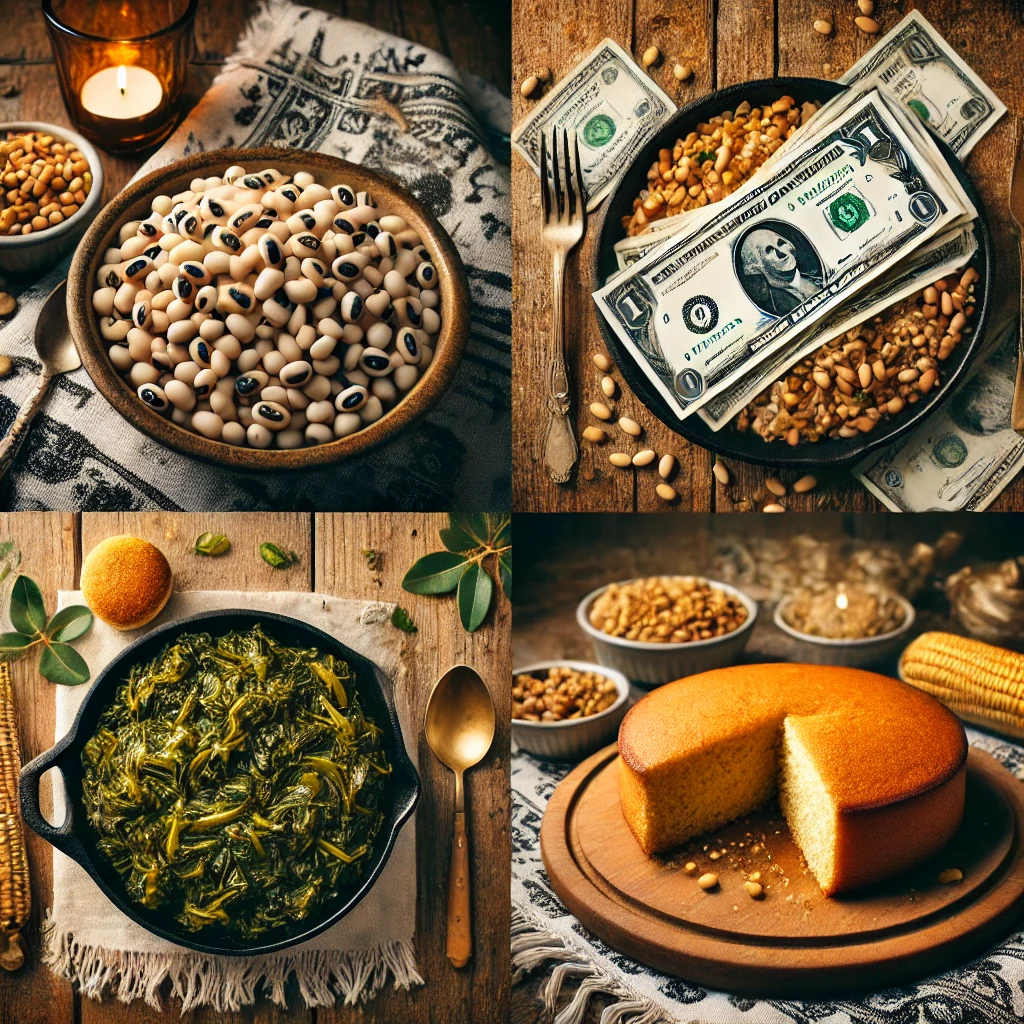New Year’s Feast: The Symbolic Foods That Bring Luck, Wealth, and Prosperity

Start the New Year with a plate full of luck, prosperity, and wealth! Discover the rich history and symbolism behind black-eyed peas, collard greens, and cornbread—and why these Southern staples could set the stage for your most successful year yet
The tradition of serving black-eyed peas, rice, and collard greens on New Year’s Day in the United States has deep historical and cultural roots, particularly in the South. It is tied to themes of luck, prosperity, and resilience. Here’s an overview of its origins:
Black-Eyed Peas
- African Roots: Black-eyed peas were brought to the Americas by enslaved Africans. They were a staple crop in West Africa and were introduced to Southern cuisine.
- Civil War Legend: During the Civil War, Union troops often raided Confederate food supplies but left black-eyed peas and salted pork, considering them animal fodder. These foods became vital sustenance for Southerners, leading to the belief that black-eyed peas symbolize survival and good fortune.
- Symbolism: Eating black-eyed peas is thought to bring good luck for the coming year, as their round shape resembles coins, symbolizing wealth.
Rice (Hoppin’ John)
- Hoppin’ John Dish: Black-eyed peas are often served with rice in a dish called Hoppin’ John, a staple of Southern cuisine with origins in African and Caribbean cooking. The dish became associated with New Year’s Day as a way to ensure prosperity.
- Symbolism: The rice represents abundance and sustenance, complementing the black-eyed peas’ symbolism of luck.
Collard Greens
- African Influence: Collard greens, like black-eyed peas, have African origins and were a key part of the diet of enslaved Africans in the South.
- Symbolism: The greens represent paper money, symbolizing financial prosperity. Their vibrant green color ties directly to wealth and fortune.
Cornbread (Optional Addition)
- Symbolism: Cornbread, often served alongside, represents gold, further enhancing the theme of prosperity.
New Year’s Tradition
The tradition became firmly established in the South and spread over time. It is rooted in a combination of cultural heritage, practical sustenance, and the symbolic hope for better times in the coming year. Many families continue this tradition today as a way to honor their ancestors and welcome the new year with optimism.

